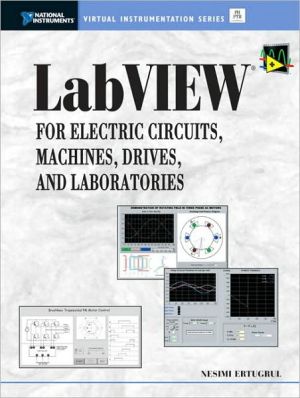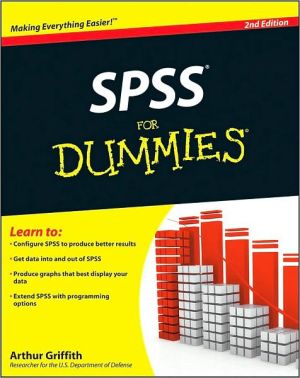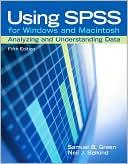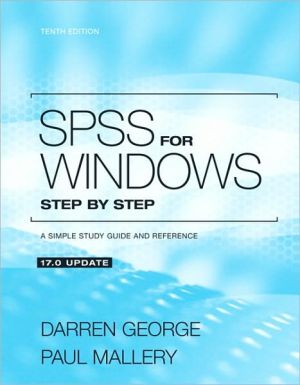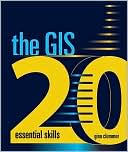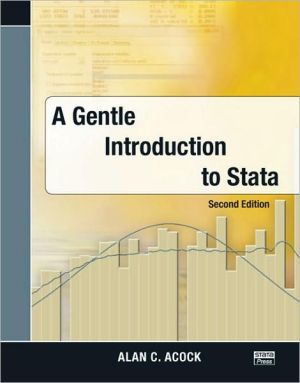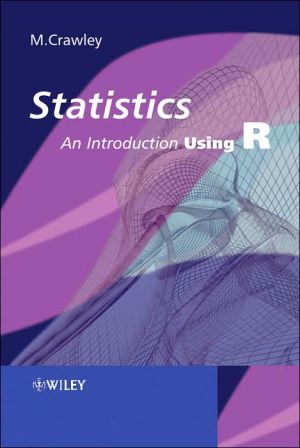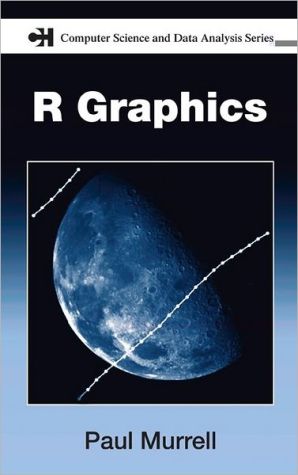LabVIEW for Electric Circuits, Machines, Drives, and Laboratories
The first interactive, LabVIEW-based guide to electrical system analysis and operation.\ For the first time, you can master electric circuits, machines, devices, and power electronics, hands on-without the use of expensive equipment. Using custom-written LabVIEW Virtual Instruments, Nesimi Ertugrul walks you through every key topic associated with the analysis and operation of a wide range of AC and DC circuits, electrical machines, and drives-including high-voltage/current/power applications...
Search in google:
Master electric circuits, machines, devices, and power electronics hands on-without expensive equipment. In LabVIEW for Electric Circuits, Machines, Drives, and Laboratories Dr. Nesimi Ertugrul uses custom-written LabVIEW Virtual Instruments to illuminate the analysis and operation of a wide range of AC and DC circuits, electrical machines, and drives-including high-voltage/current/power applications covered in no other book. Includes detailed background, VI panels, lab practices, hardware information, and self-study questions - everything you need to achieve true mastery. Booknews Ertugrul (University of Adelaide) introduces the computer simulation of DC and AC electric circuits, electromechanical devices, and electric motor and drive systems. The textbook provides instructions for testing periodic waveforms, voltage and currents, magnetization characteristics, losses in DC motors, diode conduction, and stepper motors, to name a few. The CD-ROM contains virtual instruments and an evaluation version of LabVIEW 6. Annotation c. Book News, Inc., Portland, OR
Introduction\ My strong belief is that education will have maximum value if knowledge and experience advance simultaneously regardless of quantity and complexity. This is the aim of LabVIEW for Electric Circuits, Machines, Drives, and Laboratories.\ The groundwork for this book began about seven years ago, after I purchased my first copy of LabVIEW (Version 3.0) and a data acquisition card. Since then I have obtained more software and hardware components and integrated my teaching and research activities into LabVIEW-based modules, which have diverse areas of application varying from simple simulation and data acquisition to complex Motion Control. This book is a result of these studies. I now see LabVIEW as a verb as well as a noun, and many students who have utilized the end products say that they have improved their understanding of electrical circuits, machines, and drives.\ It is a widely accepted fact that ac circuits, electrical machines, and drives are the most difficult subjects to teach and learn without some visual aids. Moreover, because in many institutions the time available for courses on electrical circuits, machines, and laboratories is severely limited, using custom-written virtual instruments (VIs) may conserve time by providing self-study tools and adding an extra dimension and visualization.\ A first in its field, this book provides complete solutions for laboratory implementations and exposes the reader to manifold phenomena taking place in various electrical systems. It is an introduction to computer simulation of dc and ac electric circuits, electromechanical devices, and electric motors and drive systems and laboratory practices, all of which utilize VIs that are provided on the accompanying CD-ROM. The CD-ROM also contains a copy of an evaluation version of LabVIEW 6.0.\ LabVIEW for Electric Circuits reinforces theoretical concepts and gives practical programming advice through examples of computer simulation in action and complete codes, which can also be utilized by potential developers. Furthermore, the book aims to fulfill the essential need for LabVIEW programming in this long-ignored area of electrical engineering—with hardware information, wiring diagrams, practical circuits, and printed circuit layouts all provided in the Appendix.\ It should be emphasized here that discussion of the details of LabVIEW programming is beyond the scope of this book. Instead, basic or more complex theory of selected subjects is transformed in ways that learners and educators perceive to be useful and effective, utilizing a number of custom-written VIs. The book effectively employs a theoretical, a real-time, and a multidisciplinary approach to give readers a broader understanding of each topic, and it provides open-ended and highly interactive VIs that can be studied using computers.\ While not intended as a detailed manual, LabVIEW for Electric Circuits provides sufficient basic knowledge to study the VI modules with a minimum background in LabVIEW. I have endeavored to make the front panels of the virtual instruments as simple and as close as possible to real-world operation. Furthermore, a considerable amount of time and effort was spent in developing cost-effective, high-performance hardware, details of which are all provided in the Appendix.\ Each subsection is dedicated to a particular concept in an electric circuit and is accompanied by a VI. At the end of most subsections, a set of self-study questions is structured to introduce study guidelines and trigger further reflection. I provide a balanced coverage of fundamental definitions, various dc and ac electrical circuits, and magnetic circuits with animated operating modes of the circuits.\ A considerable part of the book is necessarily devoted to laboratory experiments utilizing custom-written VIs, as the experimental modules are developed and currently used by the students at Adelaide University. Special attention is devoted to power electronics circuits involving basic converter topologies and to system simulations, which are related to earlier and successive chapters.\ A number of dynamic motor and drive simulations are also provided. The essential principles of such systems, which underlie the performance of electrical machines and their applications, are discussed.\ Using computer simulations without encountering the real devices is an incomplete experience since it will be only a toy (data), not a tool (information). Therefore, the book concludes with a number of real-time experimental modules that are intended to help students gain real-life experience.\ The chapter topics cover a wide spectrum of areas in electric circuits, machines, and laboratory work. The chapters are organized to briefly introduce the fundamental theory and to provide alternative self-study tools (VIs). Note that the complexity of the topics gradually increases in successive chapters.\ The CD-ROM that accompanies the book provides a wealth of supplements. The VIs supplied with the book form a veritable Virtual Electrical Circuits, Machines, and Drives Laboratory. Use of the VIs is mandatory for understanding the concepts covered in each study module. LabVIEW for Electric Circuits may well become a formidable partner for self-study and an enduring teaching assistant.\ The intention of this book is to provide correct information and error-free virtual instruments. Considerable effort has been spent on testing every VI, yet you may still find an error. Therefore, I will be pleased to receive feedback, including suggestions for improvements. For feedback, use the following addresses:\ Dr. Nesimi Ertugrul Adelaide University Department of Electrical and Electronic Engineering\ 5005, Adelaide Australia\ nesimi.ertugrul@adelaide.edu.au\ or\ nesimi@eleceng.adelaide.edu.au\
(NOTE: Each chapter concludes with References.)Preface.1. Introduction.Some Features of Virtual Instruments. Hardware Suggestions.2. Basic Definitions and DC Circuits.Periodic Waveforms, and Average and RMS Values. Periodic Waveforms and Harmonics. DC Circuits. Thevenin's and Norton's Equivalent Circuits.3. AC Circuits.Fundamental Definitions. AC Circuit Analysis. Power and Power Triangles in AC Circuits. Power Factor Correction. Star-Delta and Delta-Star Conversion in Three-Phase AC Circuits. Voltage and Currents in Star- and Delta-Connected Loads. Voltage and Current Phasors in Three-Phase Systems. Power in Three-Phase AC Circuits. Three-Phase Power Measurement and Data Logging.4. Magnetic Circuits and Measurements.Background Information. Analysis of Magnetic Circuits. BH Characteristics and Losses. Measuring Magnetization Characteristics.5. Electric Machines Laboratory.Introduction. Determining Moment of Inertia. Losses in DC Motors. Electromechanical Device Experiment. Tests for AC Circuits. Transformer Test. Asynchronous (Induction) Motor Text. Synchronization Observer. Synchronous Machine Test.6. Introduction to Power Electronics Circuits.Diode Conduction. SCR Conduction. Three-Phase Half-Way Diode Rectifier. Single-Phase AC Chopper. Cycloconverters. PWM and Single-Phase Inverter (H-Bridge) Control Methods.7. Simulation of Electrical Machines and Systems.Rotating Field Simulation in AC Machines. Dynamic Simulation of Three-Phase Induction (Asynchronous) Motor. Dynamic Simulation of Brushless Permanent Magnet AC Motor Drives. Dynamic Simulation of Direct Current Motors. Simulation of Stepper Motors. Steering and Control of Four-Wheel Direct-Drive Electric Vehicles. Fault-Tolerant Motor Drive for Critical Applications.8. Real-Time Control of Electrical Machines.DC Motor Control. Stepper Motor Control. Brushless Trapezoidal PM Motor Control. Starting Wound-Rotor Asynchronous Motors. Switched Reluctance Motor Control.Appendix.Index.About the Author.
\ Ertugrul (University of Adelaide) introduces the computer simulation of DC and AC electric circuits, electromechanical devices, and electric motor and drive systems. The textbook provides instructions for testing periodic waveforms, voltage and currents, magnetization characteristics, losses in DC motors, diode conduction, and stepper motors, to name a few. The CD-ROM contains virtual instruments and an evaluation version of LabVIEW 6. Annotation c. Book News, Inc., Portland, OR\ \
